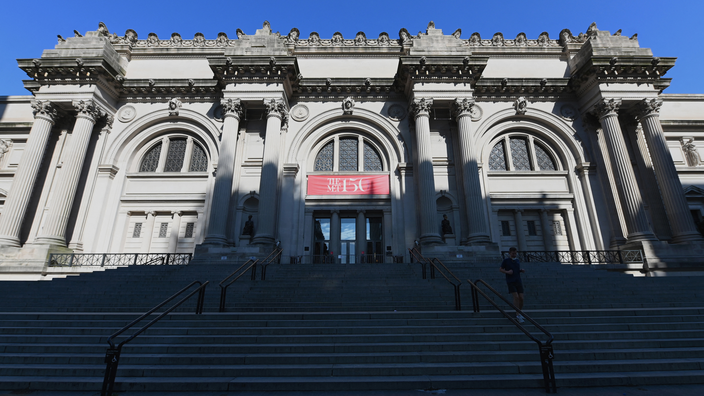Before the pandemic, sales of works by museums, known as “alienation”, could only be used to buy back others.
But in April 2020, the North American Association of Art Museum Directors (AAMD) lifted this taboo.
Museums will be allowed to sell, for two years, in order to relieve their finances, which have been heavily impacted since the start of the Covid-19 pandemic.
Read also: The "commando sale" of works of art raises 2.4 million euros for the benefit of "Protect your caregiver"
In September, the Brooklyn Museum, already financially on edge before the health crisis, began selling twelve works, including one Monet and two Dubuffets, in order to create a maintenance fund for its collection.
In February 2021, the director of the Metropolitan Museum, Max Hollein, indicated that the most prestigious of New York museums would use this process, this year, to pay the costs of maintaining its collection and the salaries of dedicated staff.
All the same, the art historian has made a point of minimizing the importance of this decision, which he presents as temporary.
"Many institutions have been alienating for decades,"
he told AFP, adding that the Met did not plan to sell more works in 2021 than in previous years.
“We believe that this benefits the development of our collection,”
he explained.
Read also: The Metropolitan Museum could sell pieces from its collections to avoid financial sinking
"Financial asset"
The sale of works of art by museums has always been a controversial subject.
The Anglo-Saxon world is generally quite open to controlled sales, but most countries of Latin culture, including France, are against it.
Serge Lasvignes, the president of the Center Georges Pompidou, told him
"to doubt the interest of taking this path"
, whether to compensate for financial difficulties or as
"an instrument of" good management "of the collection"
.
To read also: Serge Lasvignes: "The question of closing Beaubourg for work in 2023 arises"
"If the works hanging on the walls turn into financial assets, it is extremely worrying"
, also believes the lawyer Laurence Eisenstein, who recently led the sling against the officials of the Baltimore Museum of Art, which wanted to sell three major works of his collection, including a Warhol, estimated at $ 65 million in total.
The sale of these paintings was intended to create a preservation fund for the collection of the first museum in this city with a predominantly black population.
And to "rebalance" the collection by acquiring works of women and artists from minorities.
But in the face of criticism, the institution gave up this sale in October and decided to raise the necessary funds through a call for donations, explains its director, Christopher Bedford.
Nevertheless and contrary to what Baltimore planned to do, most museums refuse to sell important pieces of their collection, believing that it should be preserved as much as possible.
The Metropolitan Museum thus sells mainly objects of which it owns several copies or works by an artist
"of which we already have two dozen works from the same period"
, explains Hollein.
But others, less known, have taken the plunge.
The Everson, museum of Syracuse (State of New York), sold, in October, a Pollock for 12 million dollars, whereas this one had been given to the institution.
Its sale sparked the ire of part of the art community, despite the museum's intention to open its collection to diversity.
"An art museum sells its soul"
, reacted in particular to a
Wall Street Journal
columnist
, Terry Teachout, accusing the institution of
"betraying the trust of the public"
.
Read also:
A Death Worth It:
Donald Ray Pollock's Misfits
Laurence Eisenstein also fears that donors and authorities will withdraw their financial support from establishments that sell more than they should:
"'Why do you need our money? Sell your works instead.'
It would become very difficult for museums to remain the trusted custodians of America's cultural property ”
.
"Disuse"
Incorporating works by artists from minorities, however, responds to a strong demand, accentuated by the 2020 movement against racial inequalities.
But many in the community believe that it is necessary to proceed by addition and not by substituting these works for others.
If the Met has made such diversification a priority,
"we are not using our current collection to achieve this"
, specifies its director, preferring to turn to its donors.
For Brian Frye, professor of law at the University of Kentucky, the statute of American museums, almost all private but non-profit, constitutes in itself a sufficient safeguard against the possible drifts of alienation.
"Do I think that the museums will start to monetize their collections in shambles?"
No, not at all, ”
said the academic, adding that
“ a lot of people are panicking about it ”
.
For Christopher Bedford, the framework set by the AAMD
"must be reviewed"
, although museum directors are increasingly in favor of these new provisions.
In the meantime,
"we are falling into disuse
, he explains,
because we refuse to update our models of thought and our ways of doing things."

